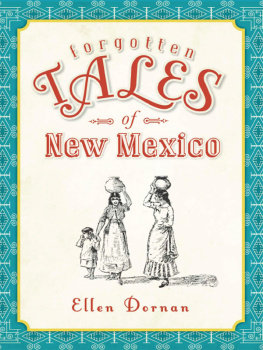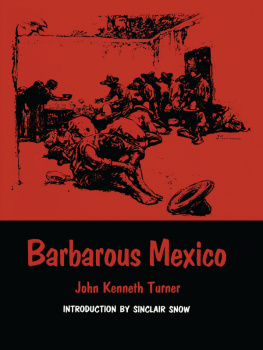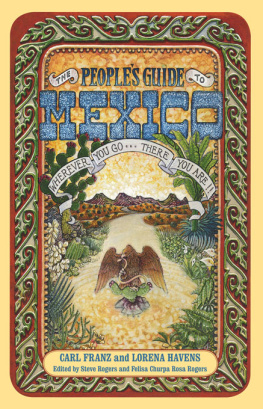

Cover Art by Ron Kil
All photographs and illustrations
are from the author's collection unless otherwise indicated.
2005 by Marc Simmons. All rights reserved.
No part of this book may be reproduced in any form or by any electronic
or mechanical means including information storage and retrieval systems
without permission in writing from the publisher, except by a reviewer
who may quote brief passages in a review.
Sunstone books may be purchased for educational, business, or sales
promotional use. For information please write: Special Markets Department,
Sunstone Press, P.O. Box 2321, Santa Fe, New Mexico 87504-2321.
Library of Congress Cataloging-in-Publication Data:
Simmons, Marc.
New Mexico mavericks : stories from a fabled past / Marc Simmons.
p. cm.
ISBN 0-86534-500-7 (hardcover : alk. paper) ISBN 0-86534-467-1 (softcover : alk. paper) ISBN: 978-1-6113930-1-9 (e-book)
1. New MexicoHistoryAnecdotes. 2. New MexicoBiography Anecdotes. 3. Frontier and pioneer lifeNew MexicoAnecdotes. I. Title.
F796.6.S56 2005
978.9dc22
2005027362

WWW.SUNSTONEPRESS.COM
SUNSTONE PRESS / POST OFFICE BOX 2321 / SANTA FE, NM 87504-2321 /USA
(505) 988-4418 / ORDERS ONLY (800) 243-5644 / FAX (505) 988-1025
FOR
MELANIE,
MOLLIE
&
BEN

NEW MEXICO, USA
In 1912 a presidential proclamation made
New Mexico the 47th State of the Union.
CONTENTS
I
WHEN SPAIN RULED
II
UNDER THE MEXICAN FLAG
III
FIGHTING INDIANS
IV
THE SOLDIERS VIEW
V
MEN OF STANDING
VI
FOREVER, COWBOY
VII
ITINERANT WRITERS
VIII
WOMEN OF GUMPTION
IX
THROUGH CHILDRENS EYES
FOREWORD
THERE IS SOMETHING ABOUT NEW MEXICO that has long proved attractive to mavericks, eccentrics, outsiders. I cant say precisely what it is, but it has to do with the uncommon mix of landscape, sparkling air, history, multiple cultures and isolation from Americas mainstream.
Since the days of the first Spanish settlers, New Mexico has been a place where a fellow could come and spin out his own, highly individualistic pattern of living. I recall the many references I have seen in the colonial documents dealing with the complaints put forth by local officials against those pioneer New Mexicans who would not conform.
To the despair of the Kings officers, they insisted upon scattering out in the remote countryside instead of congregating in neat, fortified towns as the law required. Governor Fernando de la Concha in 1788 claimed his subjects were churlish by nature and wanted to live in perfect freedom away from the regulating hands of church and state.
An escape to the wilds of New Mexico was in the minds of artists and writers two centuries later who fled the East Coast to found colonies in Santa Fe and Taos. They wanted to leave the constraints of their own society, and at the same time find a land that could stimulate creative juices.
Englishman D.H. Lawrence spoke for all of them when he exclaimed passionately, For greatness of beauty I have never experienced anything like New Mexico.
Here, in the wide sunlit reaches at the heart of the Southwest, inspired men and women felt free to express their literary and artistic impulses. New Mexico is like that, wrote Conrad Richter. You never know in what obscure canyon or on what sunbaked mesa you will find an artist or scholar in exile.
In the years following World War II, word circulated in Bohemian circles throughout the country that the small and distant University of New Mexico offered a congenial atmosphere for non-conformists. To the campus came, if not a host, at least a respectable tribe of free-thinking youths. Below the shadow of the Sandia Mountains, there grew a tiny island of intellectual rebeldom.
Prominent in the ranks of this new generation of escapists was Edward Abbey. As a student, he wrote novels, finely crafted novels set in New Mexico and featuring stubborn, enduring, individualistic New Mexicans. That was in the days, of course, before he had gained a national reputation for his fiercely partisan writings on behalf of conservation.
One of Abbeys campus-born books was Fire on the Mountain, a novelistic treatment of the Prather episode in the Tularosa Basin. A few years before, 82-year-old rancher John Prather had grabbed headlines across the country when he took up a rifle to protect his home and land. The Army had condemned them as part of the expansion of White Sands Missile Range.
Using authors license, Abbey doctored the story a bit, both for dramatic effect and to better hammer home his message. But the books hero, old John Vogelin, accurately mirrors the tenacity and courage of the real John Prather.
At the end, with all the forces of the establishment arrayed against him, Abbey has Vogelin utter his credo. The rancher declares: I aint going to give in like a gentleman. If I have to give in, Im going to give in like an Apache. Thats part of the pattern. Thats the tradition around here.
The reader understands the phrase, giving in like an Apache, to mean going down fighting against impossible odds. And Vogelin is right. That tradition runs deep in New Mexico history, and it still possesses plenty of strength.
Across the centuries, here in the heartland of the upper Rio Grande, sturdy folk have left us a wealth of stories full of adventure, humor, tragedy, melodrama, joy and mystery. Those are the very elements that can lure readers of all ages into the world of books. Story-telling has been part of the human experience since our ancestors lived in caves. So, after all this time, we are deeply attached to the telling of tales.
As a professional historian of the old school, I remain firmly wedded to the writing of narrative history, that is, history rendered as a story with a beginning, a middle and an end.
Honest historical narrative in no way slights the quest for truth or abandons respect for authenticity in describing the past. Rather, it calls upon legitimate literary devices that help to engage and hold a readership, with the aim of building a genuine sense of history in a wider audience.
For more than fifty years, I have been chasing down New Mexico history and have found it to be one long excursion into high adventure. In the process, Ive written hundreds of short pieces, mini-episodes as it were, concerning the people, places and events that collectively make up the richly-textured story of New Mexico.
This book pulls together a collection of some of my favorite pieces. It focuses on individuals, who in a measure large or small, left a mark on New Mexican culture and the pages of history.
I will be well-satisfied should a significant number of this books readers come away with the desire to explore further the rewarding world of New Mexicana. It encompasses the richest body of regional history to be found anywhere within the United States.











